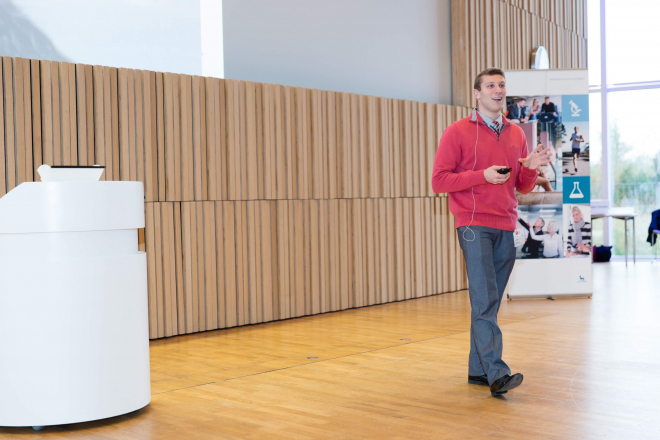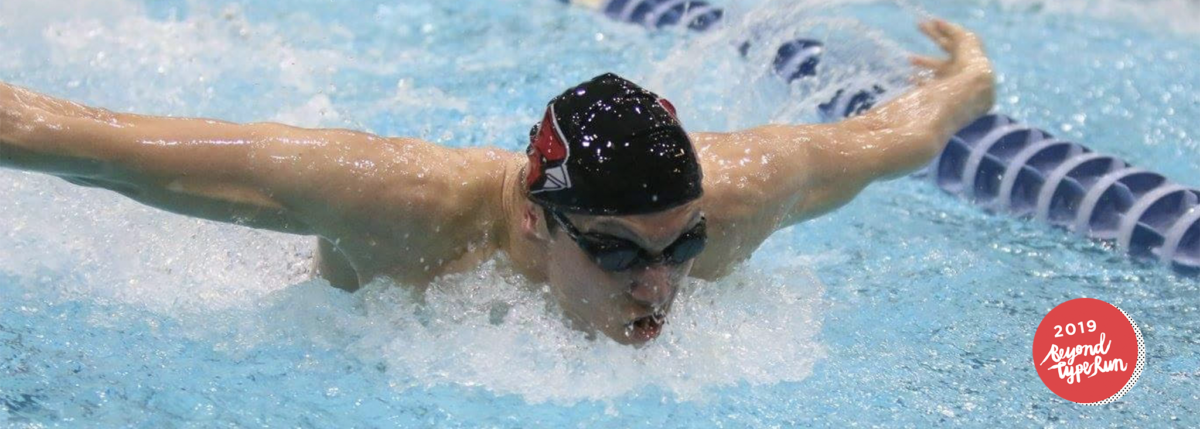Trading in Goggles for Running Shoes
Tanner is a member of the 2019 Beyond Type Run team running the TCS New York City Marathon. Beyond Type Run is sponsored by Dexcom and Tandem Diabetes Care.
Diving in
Racing is in my blood. Having been a competitive swimmer for 18 years, I loved the feeling of being behind the blocks. I longed for the days when I could tighten my goggles and be in my racing zone. I was never a pure sprinter in the water, but rather a mid-distance swimmer. My coaches called me a “back-halfer,” a term in swimming that’s used to describe a fierce competitor who finishes the second half of a race stronger than the rest of the field. I would eagerly await the chance to run down my competition, pushing off the last wall, imagining it’s a springboard, propelling me into the final lap and opportune chance to reel in my competition. After I exhausted my NCAA eligibility in 2017, I dreamt of recreating those memories. While I continue to swim and have the unique opportunity to be a swimming and diving coach at the collegiate level, I am ready to return to the racing mindset. I have been striving to work toward a goal, doing everything in my power to achieve it. But this time, I’ll be trading in my goggles for a pair of running shoes.
The science of swimming… and running
When it comes to equipment, swimming is a relatively basic sport. While you could benefit from technical racing suits or the most hydrodynamic swim cap, all you’d need to compete are goggles and a swim cap. Similar to swimming, you don’t need top of the line training gear to run. Your singlet doesn’t matter nor do the socks that you’re wearing. All you’d need to compete in a marathon is a pair of running shoes. They better be a reliable pair of running shoes though; not all will be suitable for the 26.2 miles!

While running and swimming don’t require equipment like shoulder pads or shin guards, there is much more to each sport than just slipping into your swim suit or lacing up your running shoes. Racers must understand how to properly train, focusing on the principle of progression and adaptation. Competitors must master the art of pacing, ensuring they have the necessary fuel and energy to complete the entire race at a high intensity. And these racers must understand how to properly train the mind and body, incorporating aspects of nutrition and sports psychology. I got my Master’s in Exercise Physiology: Sport Performance, so I draw a lot on my education and understanding of these training principals. While this will be my first time running more than 14 miles without stopping, let alone an entire marathon, I am confident my educational background and swimming experience will help me be successful.
Optimal success comes with optimal control
It’s important to understand how a swimmer can safely and properly train for a marathon, but it’s even more crucial to understand how this swimmer with type 1 diabetes will be equipped to handle a marathon. When I was competing at national swimming championship meets, I would test my blood sugar levels 20-24 times per day. I knew that optimal control of my type 1 diabetes (T1D) would lead to optimal performance. My diagnosis of type 1 in 2003 and my living with the disease for 16 years has proved to me that discipline, perseverance and eternal optimism are necessary tools for success. I could have chosen to go through days without worrying about my blood sugar levels, but I knew that as a collegiate swimmer, I would only be the best version of myself (and help my team!) if I were being proactive and taking control of my T1D.

There were days when I wanted to throw in the towel. There were training sessions when my blood sugar levels were consistently low, despite all the efforts I made to eat fast-acting carbohydrates and return to practice. I vividly remember representing my university during my senior year championship with a blood sugar that was lower than 3.9 70 mmol/L70 mg/dL. I had nine butterscotch candies in my mouth, looking like a chipmunk behind the block, but trying to feverishly suck on the candies so the sugar would be quickly absorbed by the mucus membranes in my cheeks. These were scary times and times of pure exhaustion, but I continued to push forward because I loved racing. Thanks to my family, friends, coaches, teammates and medical team, I refused to let diabetes stand in my way.
The same can be said for this marathon… I will be doing all that I can to put myself in the best position I can to succeed. The only difference is that I will now be racing with 29 teammates who understand the literal highs and lows of living with type 1 diabetes. And oh yeah, how could I forget? I’ll also be doing it on land and not in the pool!
Tanner Barton is raising money for Beyond Type 1 through Beyond Type Run—his fundraising will make a real difference in the lives of those living with T1D.





